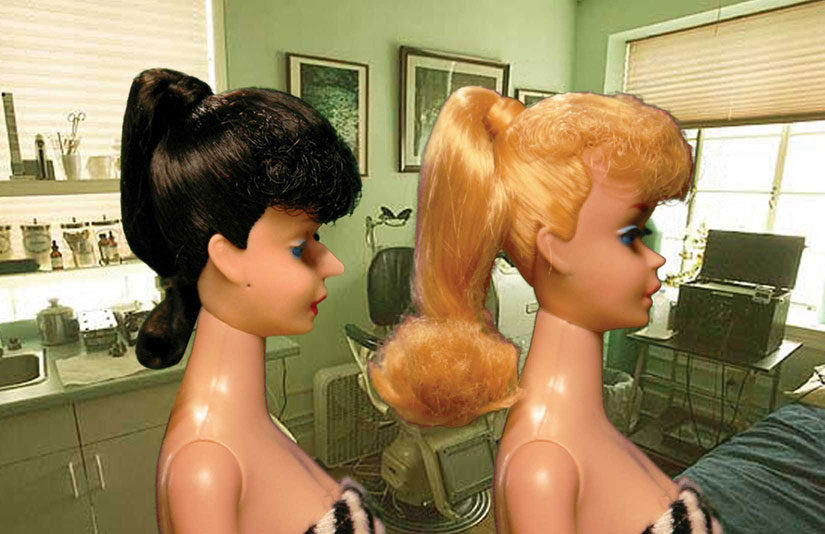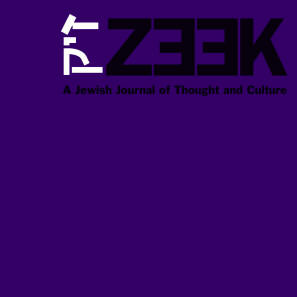 April 06
April 06
Tribal-Princess Barbie
by Leah Koenig
p. 2 of 2
L: There seems to be - at least in New York and to some degree across the country – a great deal of “reclaiming” going on within the Jewish tribe. It is less clear exactly what is being reclaimed. You mention in the film that the three things Jews have in common are culture, heroes, and stereotypes. So, forgive my asking a similar question in a slightly different way, but is culture really enough to bind a tribe together?
T: Well yeah, some people might say this [trend of reclaiming Jewish identity] is culture-lite. But I think culture is an amazing entry point into your identity. I have faith in the inquiring mind of the Jew. I believe that if you are experiencing things through culture, than it’s really an entry point for delving deeper.
L: Sure, and there’s always the argument of, “why do we privilege a particular kind of text learning over other expressions of Jewish identity?”
T: Exactly! Thank you. Our generation has so many different types of mediums. Who is to say that if you are really engaging in community online and occasionally doing something in the real world that you’re less engaged? I think new forms of community are emerging with the internet. The biggest fear that people have is whether this will replace traditions – it’s not. It’s just added ways for people to engage in community and understand who they are.

L: At what point did Barbie and her creator, Ruth Handler, get woven into your film? Was she there from the beginning?
T: [With filmmaking] I always look for an unusual metaphor to use as a way-in. A lot of people who have seen The Tribe wouldn’t have gone to a movie about Jewish identity in the 21st century – they’d walk away from the theatre. But when you say, “Hey there’s a film about Barbie coming out…” Also, I’m a blond, blue-eyed Jew whose name is Tiffany, and I’m married to a Ken who is also blond haired and blue-eyed. So needless to say, I know what it’s like to not look Jewish.
When I found out that Barbie was created by a Jew, I thought it was such a great irony of pop culture. Right when I was getting ready to deal with the subject of Jewish identity, I found out that Ruth Hander died. None of the long obituaries I read mentioned that she was Jewish. I just thought, “They buried the lead story!” And I realized that it was a great way to lead into a complicated subject with enough humor and irony to open people up.
The most amazing response to this film has been the non-Jews’ response. I had a woman come to me crying after a screening saying, “You know I’d never understood the context for Israel before” – [she didn’t] understand the history of how long Jews have been persecuted. I had another Greek immigrant say to me, “this is my story.” Inner faith couples are snapping this up because it’s such a great point of discussion for them. So, overall I’ve been really fascinated with who is buying this film. I was trying to speak with one specific group – [young Jews] who are unengaged. But the most exciting part of the project in the last couple of months is seeing that the head of Reform congregations are buying it, but so are non-Jewish schools and others.
L: One thing that The Tribe doesn’t seem to delve into is the question of gender identity. This seems like a natural angle, considering the flack Barbie has received as a negative-icon for women, and also considering the physical stereotyping of the “Jewish woman” in America. Was this a purposeful omission?
T: Yeah, well we do have a couple of lines in there, but there was so much we had to cut out. It’s only an 18 minute film. I mean obviously I’m a feminist and my last film is clearly a feminist film. But there were just a lot of things we couldn’t get into, so we tried to add a lot of subtle comments about Barbie throughout the film. Obviously, going into it deeply would be a whole other film.
L: Of course - and near the end of the film, you do feature a Jewish, female spoken word artist who incorporates the “Jewish women’s perspective” into the film.
T: Oh, she’s amazing. Her name is Vanessa Hidary and she performs all of New York and the country – including at some of our screenings. When [Ken and I] first heard her perform we were almost done with script, but we realized she was the manifestation of the journey we wanted people to take. It was a challenge to weave her in until we decided to throw the whole film into reverse as she spoke. Her poem helps viewers recontextualize what they just saw.
L: To end on a lighter note – your film identifies Barbie as the symbol for Handler’s generation of Jews, who wanted to assimilate and fit in. What do you think is the pop-culture icon for today’s Jewish tribe, if one exists?
T: I don’t know that we have one – maybe Jon Stewart is the closest. Really, I think our parents’ generation was able to identify with various icons. But today there’s so much media and so many different ways for people to identify in niche communities, how could we have just one?
Leah Koenig is an assistant editor at Zeek. She also has a food-blog called http://goodshmeats.blogspot.com








